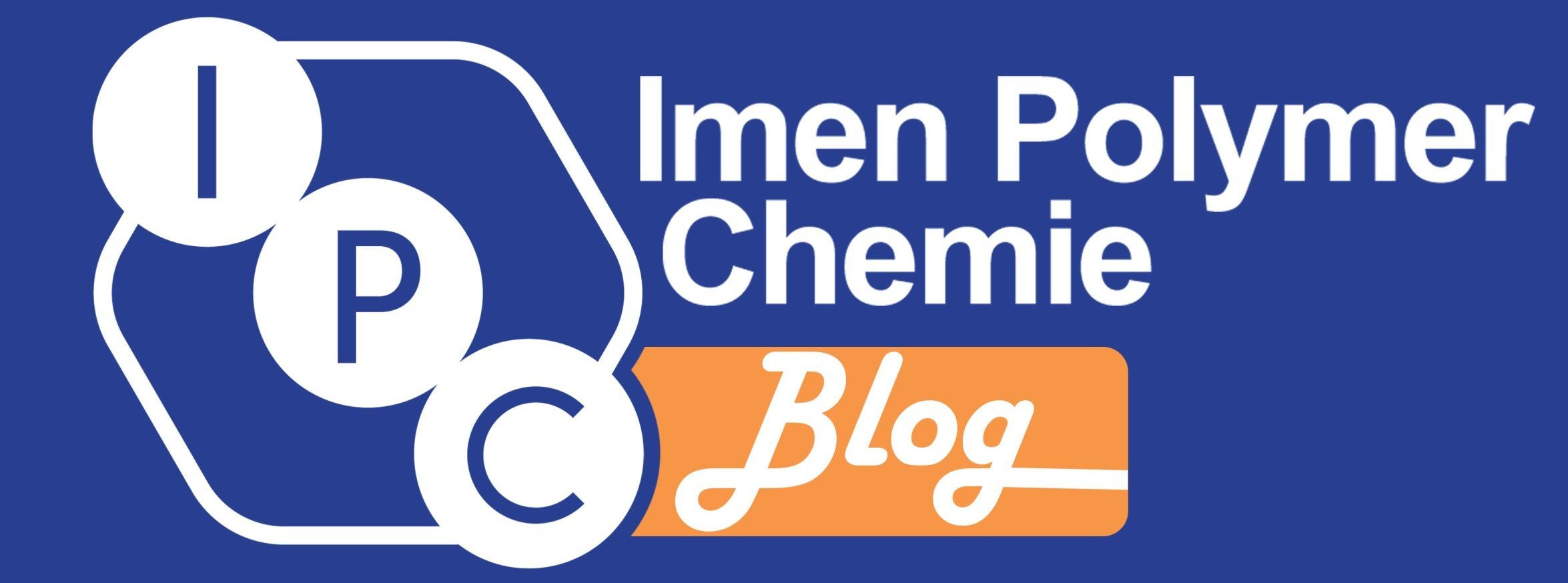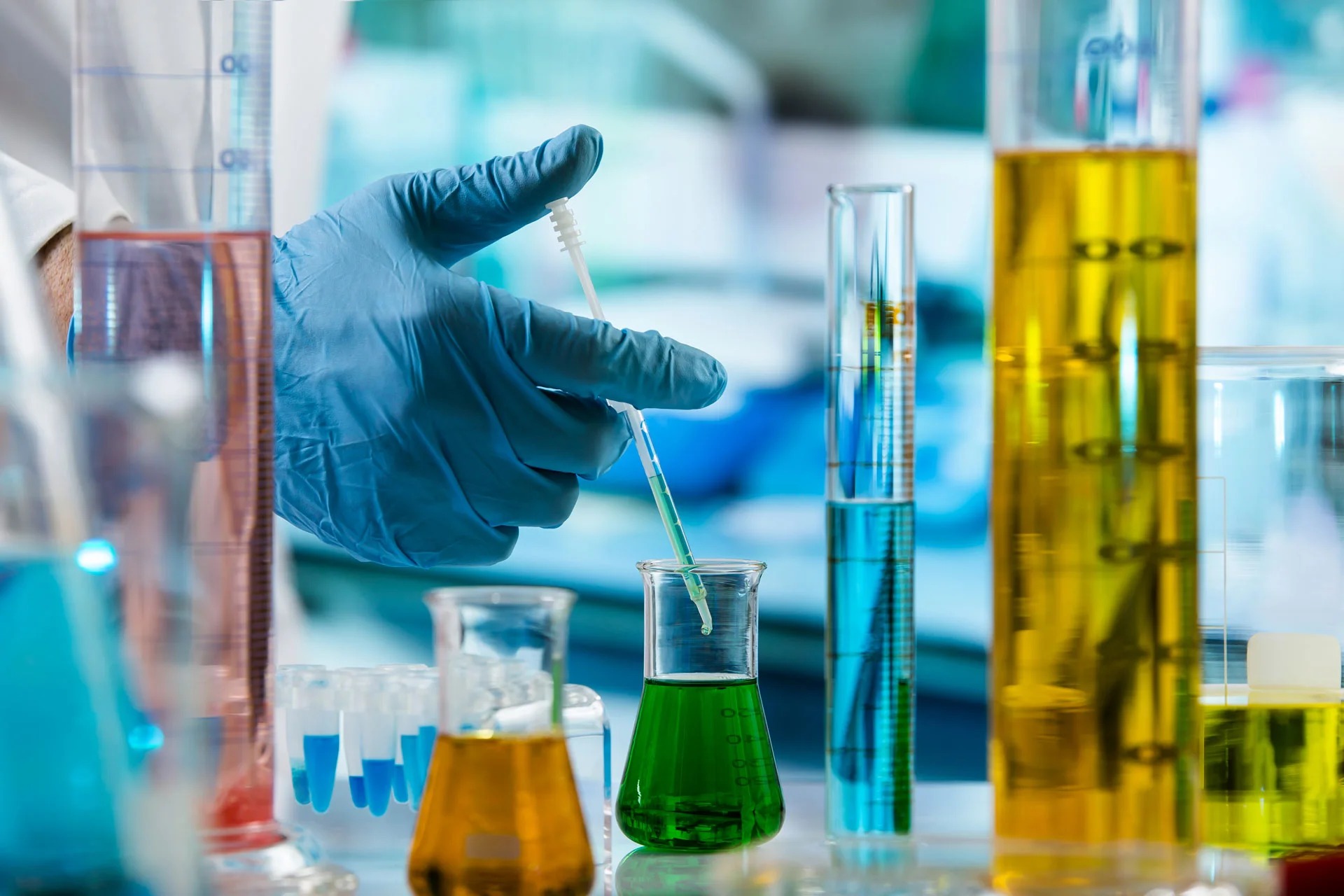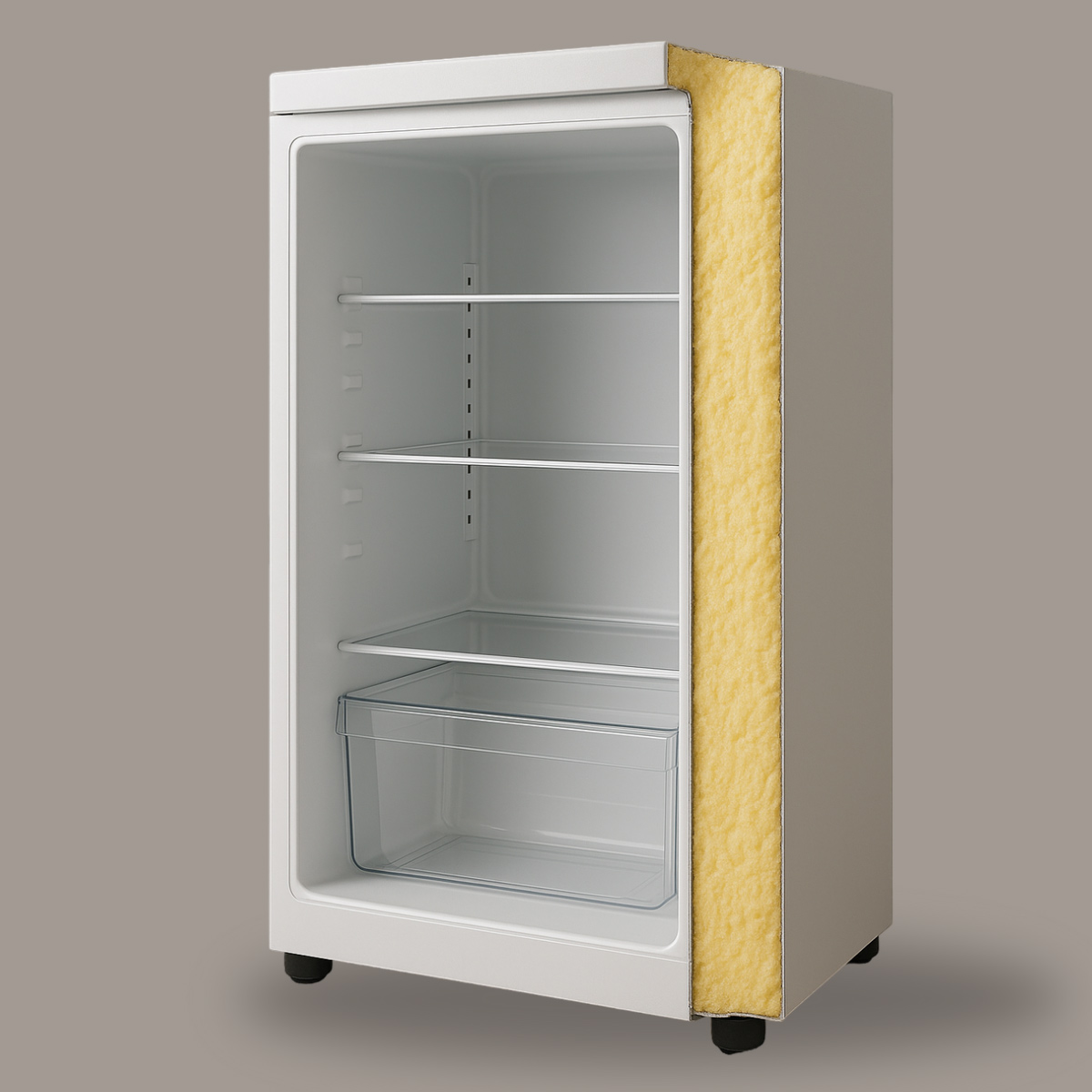Table of contents
Polyurethanes are among the most widely used materials across various industries, including construction, automotive, furniture, and packaging. Depending on their formulation and the additives incorporated, they can exhibit diverse physical and chemical properties. Additives play a crucial role in enhancing performance, improving stability, and optimizing production processes. This article explores the most important additives used in the polyurethane industry.
Producing polyurethane products
Polyurethane products manufacturing is a complex process involving the combination of two main components: polyol and isocyanate. These substances form the foundation of polyurethane polymers, determining the final product’s mechanical and chemical properties. To improve quality and performance, a variety of additives are also required. These additives serve specific functions during production and significantly influence the final product’s properties, such as flexibility, heat resistance, and durability.
Blowing agents
Blowing agents are critical in producing polyurethane foams, enabling the formation of cellular structures by generating gas during the reaction. These agents improve the foam’s thermal and acoustic insulation performance and are essential for controlling density and strength, optimizing the foam for various applications. Selecting the appropriate type and concentration of blowing agents significantly impacts product quality, cost, and performance. Generally blowing agents are categorized into physical and chemical types.
- Physical blowing agents
Physical blowing agents, such as cyclopentane (CP) and HCFC-141b, evaporate under specific conditions to produce gas, forming the foam’s cellular structure. For instance, HCFC-141b is popular for rigid foams due to its excellent thermal insulation properties, although environmentally friendly alternatives like HFCs are now preferred. These agents play an important role to optimize foam density and cell structure.
- Chemical blowing agents
Chemical blowing agents produce gas, typically carbon dioxide, during the chemical reaction between isocyanates and water. These are commonly used in producing flexible and rigid foams, creating appropriate cellular structures and improving the performance of the final products.
Catalysts
Catalysts accelerate chemical reactions without being consumed in the process. In polyurethane production, catalysts regulate the reaction rate between components, ensuring the formation of high-quality polymers with stable structure. Catalysts are categorized into amine and metallic types. In the following, we will discuss them more.
- Amine catalysts
Amine catalysts, particularly tertiary amines, are widely used to enhance the reaction between polyols and isocyanates. Common examples include A33 (Dabco 33%) and A1, which are highly effective in producing flexible and rigid polyurethane foams. These catalysts improve process control and result in products with excellent mechanical properties.
- Metallic catalysts
Metallic catalysts, such as tin-based T9 (Dabco T-9) or Kosmos 29, are used to accelerate specific reactions, particularly in rigid foam production. These catalysts provide precise control over reaction rates, resulting in foams with stable cellular structures and superior thermal properties.
Metal catalysts are another type of catalyst used in the polyurethane industry to speed up chemical reactions between isocyanates and polyols. These catalysts typically contain metallic compounds and are particularly effective in processes requiring high speed and precise control. They are often used supplement with amine catalysts to optimize foam production reactions.
One of the most well-known metal catalysts is T9 (DABCO T-9) or Kosmos 29, which is based on tin compounds and widely used in producing rigid polyurethane foams. Thanks to its unique properties, this catalyst allows precise control over reaction rates, resulting in foams with stable cell structures and excellent thermal properties. However, improper use of metal catalysts can lead to defects in the final product, so careful selection and dosing are of great importance.
After sales service
For price inquiries and purchasing liquid polyurethane for polyurethane foam production, please contact Imen Polymer Chemie Company.
Surfactants (Stabilizers)
Surfactants, also known as cell stabilizers, are compounds used in the production of polyurethane foams to stabilize the cell structure and prevent cells from collapse. By reducing surface tension within the foam, they help achieve a uniform cell distribution, resulting in foams with stable and consistent cellular structures. Surfactants contribute to producing foams with excellent thermal and sound insulation properties as well as high mechanical strength. They also play an effective role in controlling the foam’s volume and density, optimizing the quality of the final products.
The importance of surfactants in the polyurethane industry is such that selecting the right type and amount can significantly impact the final foam quality. Insufficient use of cell stabilizers can cause cells to collapse rapidly during production, leading to foams with poor structure and weak properties. Optimal use of surfactants not only ensures high-quality foam production but also reduces the costs of production and enhances the performance of the end products. Among the most commonly used cell stabilizers are silicones, known for their excellent thermal stability and chemical resistance.
Flame retardants
Polyurethane materials are inherently flammable, which can pose serious risks such as fire hazards. Flame retardants are added to reduce flammability and enhance fire resistance, increasing safety and product durability. These additives are categorized into halogenated, phosphorus-based, and non-halogenated types.
- Halogenated Flame Retardants
Halogenated compounds, such as chlorine and bromine, create a protective layer during combustion to slow flame spread. However, environmental concerns have led to their reduced use in favor of safer alternatives.
- Phosphorus-Based Flame Retardants
Phosphorus-based compounds have become a preferred alternative to halogens due to their lower environmental impact and high efficiency. These additives work by forming a carbon layer on the foam’s surface when exposed to heat, effectively preventing the spread of flames. Additionally, phosphorus helps lower the temperature and reduce the ignition rate of the foam, enhancing the safety of polyurethane products.
Given their stability and non-toxic nature, phosphorus-based additives are increasingly being adopted across various industries. One common flame retardant in polyurethane formulations is Tris(1-chloro-2-propyl) phosphate (TCPP), widely used for its effective fire-resistant properties.
- Non-Halogenated Flame Retardants
Additives like aluminum trihydrate (ATH) and magnesium hydroxide release water during heating, reducing flame spread and cooling the combustion zone. These compounds are non-toxic and stable, making them a preferred choice for environmentally friendly formulations. By incorporating these additives, polyurethane products can achieve superior performance, meeting the diverse requirements of industries such as construction, automotive, and packaging.
Adhesion promoter agents
One of the critical properties of polyurethanes is their high adhesion capability to various materials. This feature makes polyurethanes highly popular in many industries, including automotive, construction, and footwear production. However, to enhance the adhesion of polyurethane to different surfaces, additives known as adhesion promoters are incorporated into the formulation. These additives help create stronger and more durable bonds between polyurethane and other materials, especially in challenging environmental conditions.
For example, PPG (polypropylene glycol) is an important additive in the polyurethane industry known for its adhesion-promoting properties. Due to its unique chemical characteristics, PPG enhances polyurethane adhesion to surfaces such as metal, wood, and plastic. PPG can be used as a polyol in polyurethane formulations to improve the adhesion and flexibility of the resulting foams.
The use of PPG is particularly common in the automotive and construction industries. It not only increases adhesion but also improves the mechanical and chemical properties of polyurethane foams, enhancing their quality and durability. By selecting the appropriate type and proportion of PPG in the formulation, manufacturers can achieve desired properties and produce higher-quality products.
Thermal and UV stabilizers
Although polyurethanes exhibit remarkable resistance to environmental factors due to their unique chemical properties, they are still vulnerable to thermal and UV degradation. Exposure to heat or ultraviolet (UV) light for long period of time can damage polyurethane structures, reduce mechanical properties, cause discoloration, and even lead to brittleness. To increase the lifespan and durability of polyurethane products under various conditions, thermal and UV stabilizers are added to formulation. These additives not only prevent physical degradation but also preserve the appearance and functionality of polyurethane products over time.
- Thermal stabilizers
Thermal stabilizers are used to protect polyurethanes from degradation at high temperatures during production processes or long-time use. In manufacturing processes involving heating and material injection, polyurethanes may undergo thermal degradation, losing their properties. Common thermal stabilizers such as phosphites and antioxidants prevent oxidative thermal reactions, enhancing the stability of polyurethanes. These stabilizers inhibit chain reactions leading to thermal degradation, preserving the chemical structure of polyurethanes and consequently improving their durability.
- UV stabilizers
UV stabilizers are used to protect polyurethanes from sunlight, particularly UV rays. Exposure to UV can degrade polyurethanes by generating free radicals and breaking chemical bonds. Common UV stabilizers, such as UV absorbers and free radical scavengers, prevent damage by absorbing or neutralizing UV energy. These stabilizers ensure long-term appearance and functionality, especially in applications where polyurethane products are exposed to outdoor environments and direct sunlight.
Plasticizers
Plasticizers are essential additives in the polyurethane industry that increase flexibility, softness, and elasticity. These substances modify the molecular structure of polyurethanes, reducing hardness and enhancing the flexibility of products. Plasticizers are particularly important in manufacturing items like flexible foams, elastomers, synthetic leather, and polyurethane coatings. By creating space between polymer chains, plasticizers provide greater movement and flexibility, preventing brittleness or excessive stiffness.
Phthalates are one of the most common plasticizers historically used in polyurethane and plastic products. They improve mechanical properties and flexibility by lowering the glass transition temperature (Tg) of polymers. However, due to environmental and health concerns, their use has been restricted in many countries. Alternatives such as ester-based compounds or non-phthalate plasticizers are increasingly used, offering safer and more sustainable solutions for enhancing polyurethane flexibility.
In addition to flexibility, plasticizers improve properties like crack resistance, abrasion resistance, and manufacturing efficiency. This makes them widely used in industries such as automotive, furniture production, footwear, and packaging.
Solvents
Solvents in polyurethane systems, acting as important additives for viscosity regulation, processability improvement, and the application of coatings and resins. Solvents dissolve raw materials, including polyols and isocyanates, promoting better homogenization and uniform distribution, making polyurethane systems easier to handle. They are particularly critical in coatings and polyurethane paints that require appropriate flow characteristics.
Additionally, solvents can be used to clean cured foam or generate gas in systems to create porous structures. Choosing the right solvent, impacts the final properties of the product. However, solvents must be chosen carefully to enhance process performance without negatively affecting the mechanical and chemical properties of the final product.
Antimicrobial and antifungal agents
In many polyurethane applications, such as medical structures, building insulation, and coatings, resistance to microbial and fungal growth is crucial. Antimicrobial and antifungal additives are included in polyurethane formulations to prevent bacterial and fungal growth, increasing the durability and hygiene of the final product.
In environments with moisture, heat, or contamination, microbes and fungi can thrive, gradually reducing the quality and lifespan of polyurethane products. Antimicrobial additives create inhospitable conditions for microorganisms, inhibiting their reproduction and spread. For example, they can alter the pH or release metal ions such as silver and copper with antibacterial properties. Silver nanoparticles are widely used in producing polyurethane foams for medical and sanitary applications due to their strong antimicrobial effects. These additives improve durability and maintain product quality over time.
In construction and coatings, particularly in humid and warm areas, antifungal additives are very important. These regions provide ideal conditions for mold and mildew growth, which can damage polyurethane structures. Damage may include reduced thermal and sound insulation, discoloration, and unpleasant odors. Antifungal agents prevent such growth, extending the service life of insulation and coatings. Their use in building materials helps maintain efficiency and durability.
Finally, these additives contribute to polyurethane products used in sensitive environments, such as hospitals, kitchens, and industrial spaces, by reducing the risk of disease transmission and contamination. Incorporating antimicrobial and antifungal agents into polyurethanes enhances product quality and ensures safer, more hygienic applications.
Mold release agents
Mold release agents are materials used during polyurethane production to facilitate the easy separation of finished products from molds. These agents form a thin layer between the mold surface and the product, reducing friction and simplifying product removal. Their use prevents surface damage to both the product and the mold, improving final product quality. In other words, selecting the right mold release agent increases mold lifespan, reduces production time, and enhances product quality.
Specialized additives by Imen Polymer Chemie for superior polyurethane quality
As a pioneer in the polyurethane industry in Iran, we at the Imen Polymer Chemie Co. offer a wide range of specialized additives designed to enhance the properties and performance of polyurethane products. These additives include various catalysts, foaming agents (blowing agents), stabilizers, plasticizers, and adhesion promoters. By utilizing these additives, customers can produce higher-quality products with desirable characteristics such as flexibility, environmental resistance, and durability. Additionally, we provide additives tailored to the specific needs of each industry, which can improve manufacturing processes and increase the efficiency of final products.
The additives offered by our company (Imen Polymer Chemie) are produced in compliance with the latest international standards and environmental requirements. By using our experience and technical knowledge, we support manufacturers to produce polyurethane products with more advanced properties. These products can be used in various industries, including automotive, construction, medical, and household appliances. Also, we offer technical consultation and specialized support to help our customers optimize the use of these additives in their formulations for maximum performance.
Conclusion
Additives play a crucial role in the polyurethane industry, enhancing the physical and chemical properties of these materials to improve their efficiency and applications across various sectors. The use of catalysts, blowing agents, stabilizers, and flame retardants represents just a few solutions that contribute to producing safer and higher-quality products. With the continuous advancement of the industry, employing innovative and eco-friendly additives will play a vital role in shaping the future of polyurethane.








